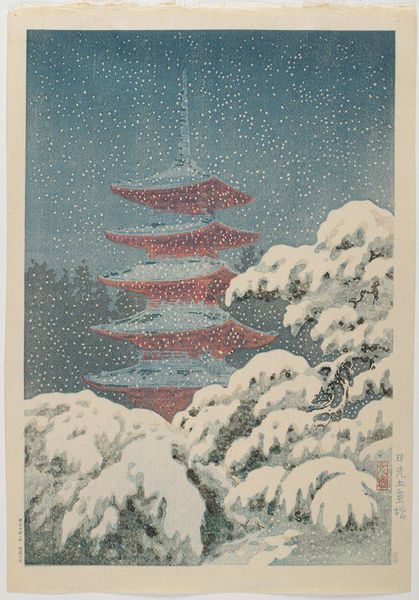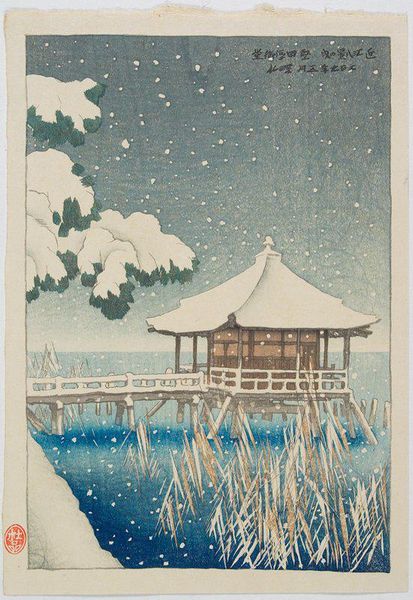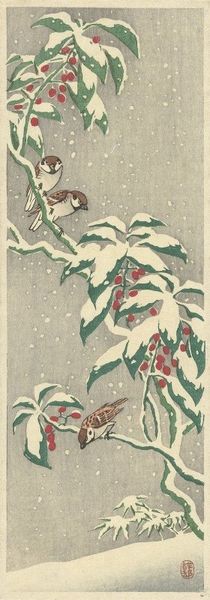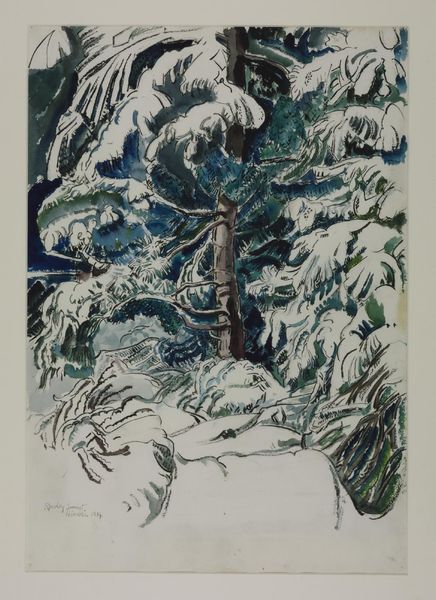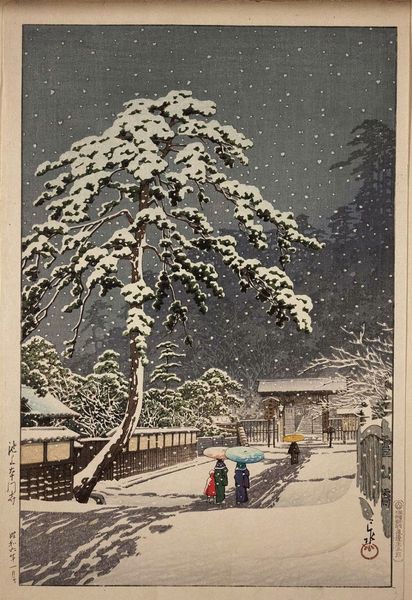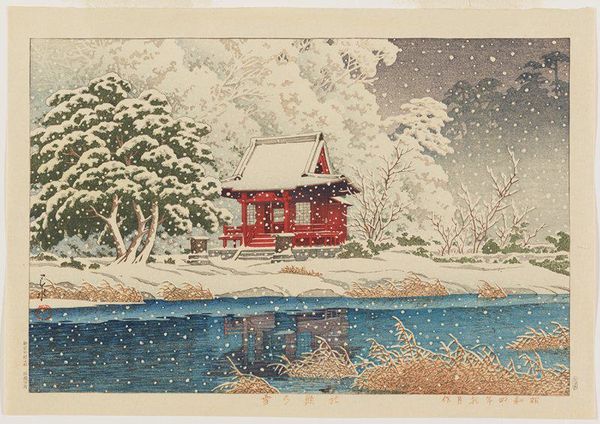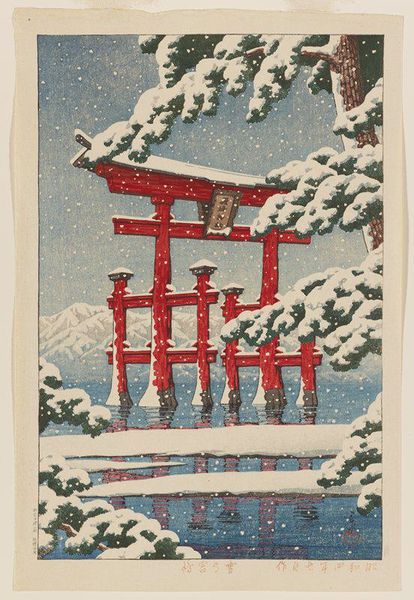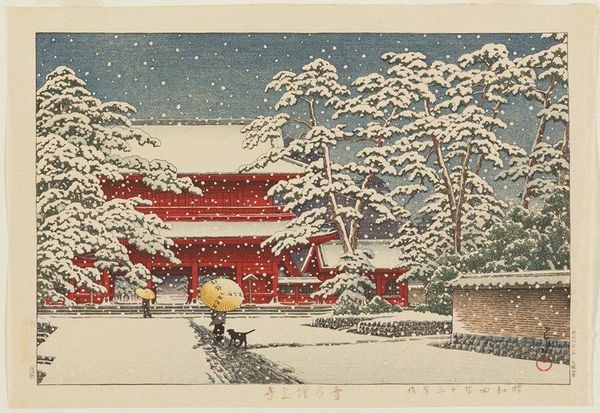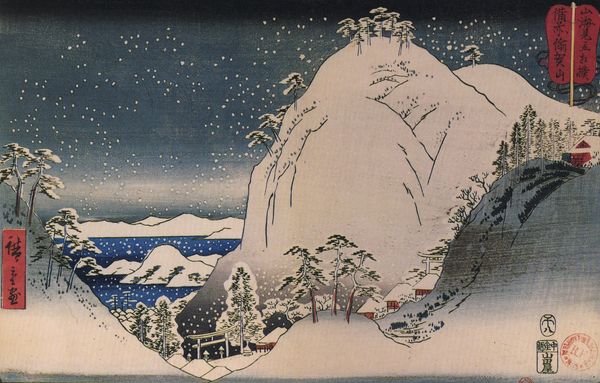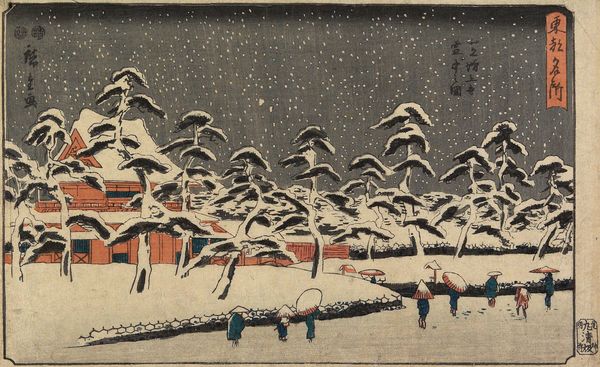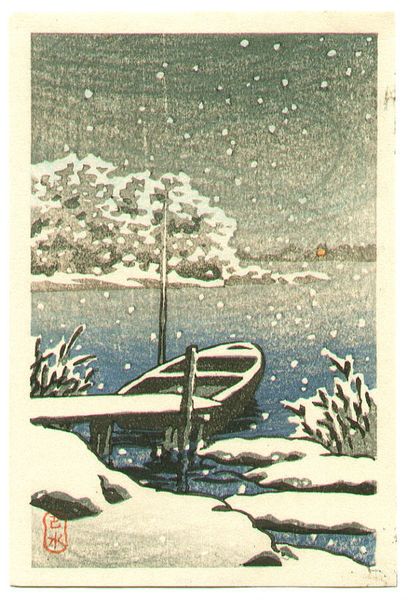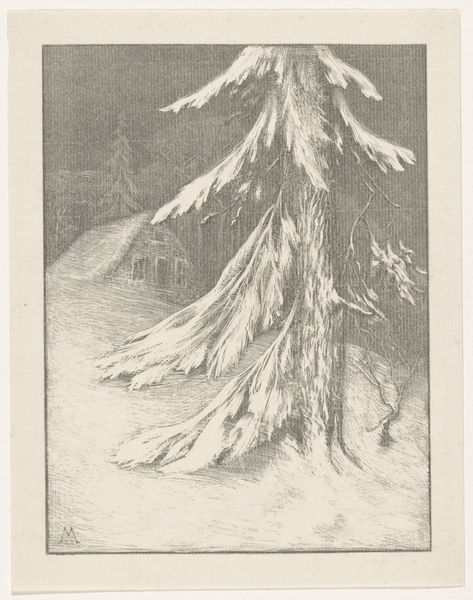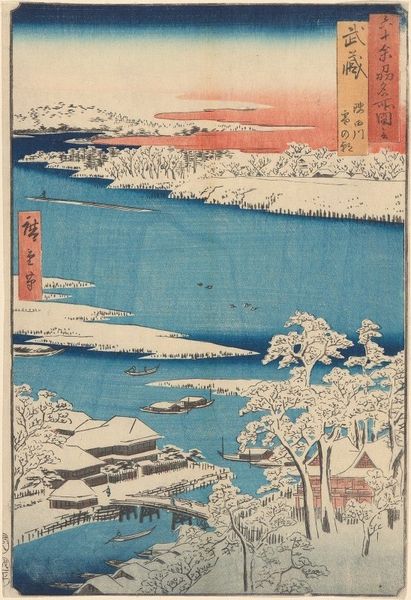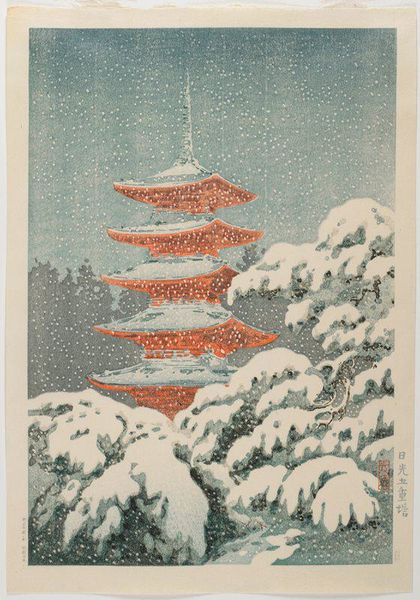
Dimensions: 14 1/4 × 9 7/16 in. (36.2 × 24 cm) (image)23 × 19 × 1 1/2 in. (58.42 × 48.26 × 3.81 cm) (outer frame)
Copyright: No Copyright - United States
Curator: The piece before us, "Pine Tree in Clear Weather after Snow", was crafted in 1929 by Hasui Kawase. It’s a woodblock print currently residing here at the Minneapolis Institute of Art. Editor: The immediate impression is one of serene isolation, isn’t it? That intense blue sky set against the heavy, snow-laden trees feels… almost melancholic, a study in contrasts. Curator: Absolutely. Kawase's works often tap into that sense of longing, a nostalgic gaze toward traditional Japanese landscapes. He revived the Ukiyo-e tradition, but incorporated elements of Western Impressionism. Editor: Ukiyo-e prints frequently celebrated the fleeting pleasures of life; to see this style applied to a landscape speaks to our complicated relationship with nature, as it's being romanticized while facing exploitation. Are these pristine snowscapes a luxury afforded to some while others are actively damaging the earth? Curator: An interesting point. Symbolically, the pine tree itself represents resilience, longevity and steadfastness in Japanese culture, and is a sign of good fortune. The weight of the snow, though, alters that symbol, making the tree a metaphor for withstanding hardships. It brings in ideas of endurance and the cyclical nature of seasons. Editor: And, of course, the clarity after the storm—there's a promise embedded here. One wonders what that promise truly entails in a world increasingly disrupted by climate change, particularly for vulnerable communities reliant on stable environmental conditions. Is there genuine hope, or just wishful thinking disguised as beauty? Curator: I appreciate that reading. By juxtaposing historical art forms with modern socio-political anxieties, we reveal these intricate dialogues about cultural continuity and the challenges that lay before us. Editor: Indeed, by engaging critically with art like Kawase's, we might see it as both a window to a culturally rich past, and also as a mirror reflecting the complex present. The weight of the past, and future.
Comments
minneapolisinstituteofart almost 2 years ago
⋮
On back: label 初版精撰、百拾の内、第七十八號、巴水 {shohan seisen, hyaku mai no uchi, dai nanajūhachi gō, Hasui} (from 100 carefully selected prints of the first edition, no. 78, Hasui) and red round stylized artist's seal; stamp: MADE IN JAPAN. First edition.
Join the conversation
Join millions of artists and users on Artera today and experience the ultimate creative platform.
